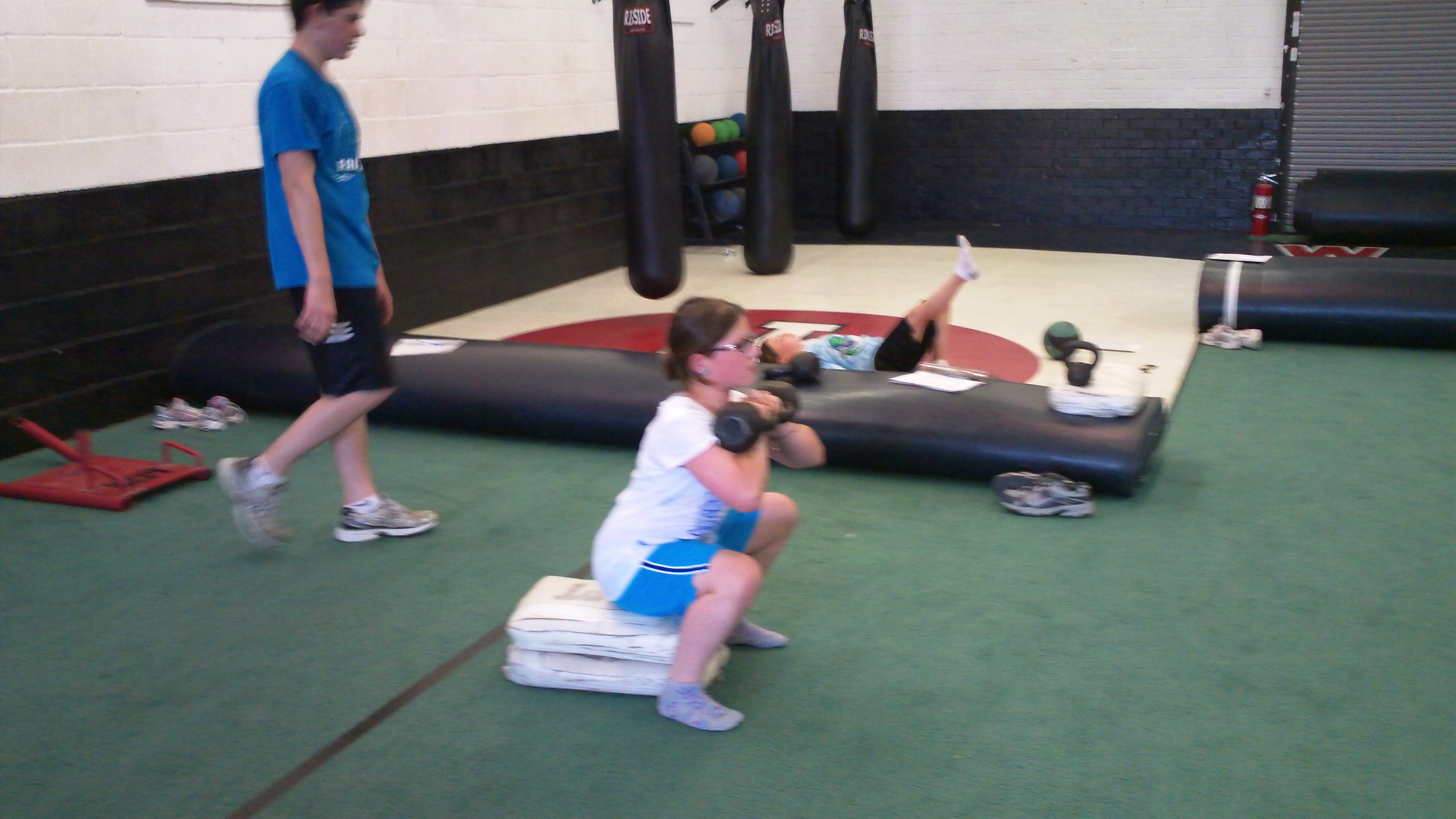Strength Training for Youths: Pre-Puberty
Last week's post listed persuasive (I think so anyway) reasons why kids should enroll in a strength training program. In that post is also a definition of a smart, sound training program. If you can't remember, here's the refresher; it involves none of the max effort, grunting/screaming/shouting version that, unfortunately, is the stereotype of our industry. Parents: NOT ALL TRAINING PROGRAMS ARE CREATED EQUAL!!!
Matter of fact, if you find your 9 year-old doing the same workout as your 16 year-old, something is dreadfully amiss. This post and the next will shed light on the differences that you should see between age groups, broadly, pre-puberty and post-puberty. Now, one thing to keep in mind as you read, these are general guidelines that apply to most of the population. There will be some puberty-stricken kids that are not prepared to train like their peers (meaning, they will be regressed considerably) and there will be some young kiddos who's physical development far exceeds their peers (though it does NOT mean they're ready for large loads; instead they'll have more advanced bodyweight and tempo variations.).
Right, let's hop in.
According to the American Pediatric Association, puberty starts between 8-13 for girls, and 10-14 for boys. For today's discussion, let's assume 15 years is the game changer in physical development. In my experience, kids under 15 still are pretty goofy and often don't have the muscular development that a 15 or 16 year old will (boy or girl). Between 8-15 a LOT of growth happens (and beyond for most boys, but we'll ignore that for now). That segues nicely into my first point:
Strength to weight ratio is a key factor to keep in mind while programming for younger kids. As I mentioned in the prior post, kids grow rapidly and without strength training, their muscle power will be left in the dust. Inadequate muscular strength will force kids to rely on their passive restraints during athletic movement. For example: a baseball pitch (or throw) will require strength in the lower body to produce rotation power, strength in the upper back and rotator cuff to maintain scapular and humeral (shoulder blade and upper arm bone) stability, and a strong core to transfer the power from lower to upper body.
This means, Jonny's shoulder and elbow ligaments are going to take a beating if he's throwing with weak muscles.
Another example: changing direction on a soccer field. The athlete must be strong enough to decelerate herself and then accelerate in a new direction. What happens if her hamstrings, glutes, quads, and core aren't strong enough to stop the motion, stabilize her joints, and reapply force in a new direction? (and this just her body weight, mind you, no external load) Strained (at best) knee ligaments, which typically manifests as the nefarious "knee pain," or, at worst, torn ligaments (good-bye ACL...).
A strength training program for a young athlete that uses heavy weights will only continue to teach the athlete to rely on passive restraints. Why? The athlete is already at a disadvantage by way of rapid growth (the strength:weight ratio is already out-of-whack). Therefore, exercises that utilize body weight or very low weights will avoid overloading the muscles and teach the athlete how to actually use their muscle mass.
The next point is tandem- teaching motor control and body awareness to younger athletes will improve their performance quickly. Kids need to understand MOVEMENTS before they can be expected to load those movements. Focusing on technique is crucial during this growing stage as their adjusting to their new bodies. Teaching kids how to use their hips (instead of their knees or lower back) in a squatting, deadlifting, and rotational pattern will benefit them immensely. Drills that include cross body movements (such as rolls and crawls, meaning left and right side have to coordinate) build "movement" bridges across the two hemispheres of the brain. A coordinated brain means a coordinated body.
Balance drills, such as standing on one foot while performing a medicine ball toss, are excellent in training the vestibular systems (inner ear) as well as teaching the brain to understand the feedback being sent by the foot.
The third point, is key. It must be FUN! Older kids often have the maturity to focus. Younger kids... it's debatable. Some kids are rock stars and can focus better than most adults, however, those athletes are few and far between. Most kids between 8-13 have shorter attention spans and lower stamina than their teenage counterparts. Therefore, we try to make the drills as fun as possible, while still teaching them technique and increasing strength. It's like hiding cauliflower in mac-n-cheese. Hide the good stuff with the delicious stuff. Un-fun sessions lead to unmotivated and easily-distracted athletes... which we all know will not advance their potential at all.
To sum it all up:
1. Focus on increasing strength:weight ratio utilizing body weight/light weight variations to teach young athletes to use their muscles.
2. Incorporate coordination and body awareness drills to TEACH MOVEMENT!
3. Keep the program fun!

